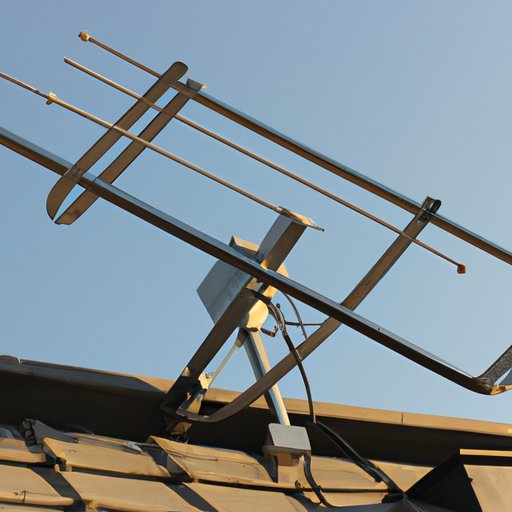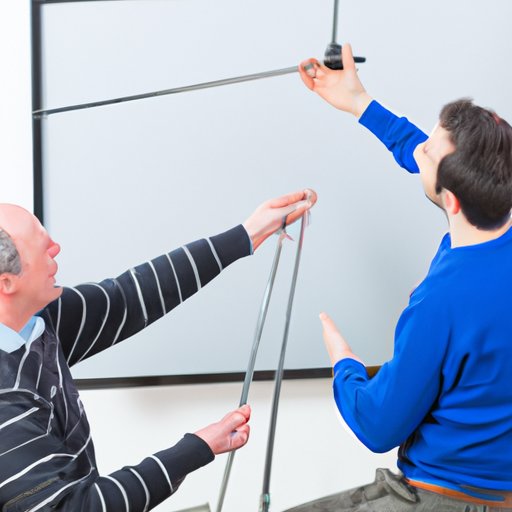
Explaining the Basics of How a TV Antenna Works
A TV antenna is a device that is used to receive signals from broadcast television stations. It is an important component for anyone who wants to watch free over-the-air TV channels without having to pay for cable or satellite services. But how does a TV antenna work? In this article, we will explore the basics of how a TV antenna works, its components, types, installation process and the benefits of using one.
What is a TV antenna?
A TV antenna is an electrical device that receives signals from broadcast television stations. This type of antenna is usually made up of metal rods and wires that are arranged in a specific pattern to maximize reception. The antenna captures signals from the airwaves and transmits them to the TV set. Depending on the type of antenna, it can pick up digital signals from both UHF (Ultra High Frequency) and VHF (Very High Frequency) frequencies.
How does it work?
When a TV antenna receives a signal, it converts the electromagnetic waves into electrical signals. These signals are then sent to the TV set where they are decoded and displayed as images and sound. The range of the TV antenna depends on the type of antenna and the distance from the broadcast towers. Indoor antennas typically have a shorter range than outdoor antennas.
Benefits of using a TV antenna
Using a TV antenna allows you to access free over-the-air TV channels without having to pay for cable or satellite services. It also provides access to local news and sports broadcasts that may not be available through cable or satellite providers. Additionally, TV antennas can provide better picture quality than cable or satellite services, as well as more reliable reception.
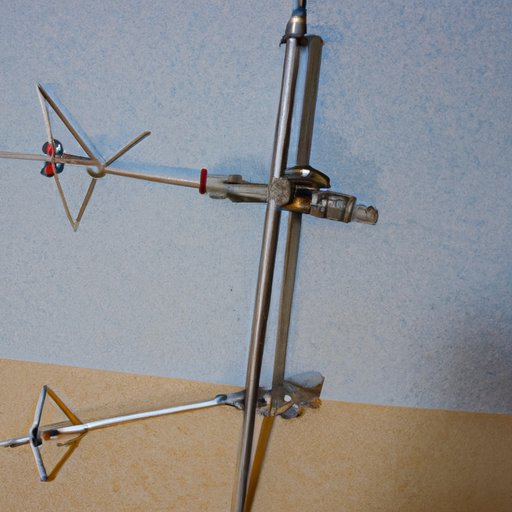
Understanding the Components of a TV Antenna
A typical TV antenna consists of several parts. The most important part is the dipole antenna, which is the main receiving element of the antenna. It is made up of two metal rods connected together at the center. The other parts include the coaxial cable, amplifier, reflector, balun, and mounting brackets. Each part plays an important role in receiving and transmitting the signal.
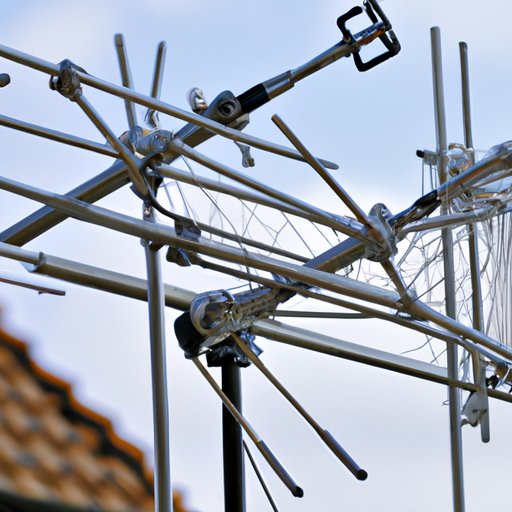
Different parts of a TV antenna
The dipole antenna is the main receiving element of the antenna. It is made up of two metal rods connected together at the center. The rods are typically made of copper and are designed to capture signals from the airwaves. The coaxial cable is a shielded cable connecting the antenna to the TV set. It is responsible for transmitting the signal from the antenna to the TV.
The amplifier is an optional component that boosts the signal strength of the antenna. It is usually installed inside the house and connected to the antenna. The reflector is a metal sheet or mesh that reflects the signal back towards the antenna. The balun is a transformer that matches the impedance of the antenna and coaxial cable. Finally, the mounting brackets are used to secure the antenna to the wall or roof.
How each part works
The dipole antenna captures the signal from the airwaves and converts it into electrical signals. The coaxial cable then transmits the signals to the TV set. The amplifier boosts the signal strength so that it can reach farther distances. The reflector helps to direct the signal back towards the antenna. The balun matches the impedance of the antenna and coaxial cable. The mounting brackets secure the antenna to the wall or roof.
Identifying Different Types of TV Antennas
There are several different types of TV antennas available on the market. The most common types are indoor and outdoor antennas, directional and omni-directional antennas, and UHF and VHF antennas. Indoor antennas are typically smaller and less powerful than outdoor antennas. Directional antennas are designed to receive signals from a specific direction, while omni-directional antennas can receive signals from all directions.
UHF antennas are designed to receive signals from UHF frequencies, while VHF antennas are designed to receive signals from VHF frequencies. UHF frequencies are typically used for digital TV signals, while VHF frequencies are typically used for analog TV signals. It is important to choose an antenna that is compatible with the type of signals being broadcast in your area.
Describing the Process of Installing a TV Antenna
Installing a TV antenna is relatively easy and can be done by anyone with basic DIY skills. Before installing the antenna, it is important to determine the location of the broadcast towers in your area. This will help you choose the right type of antenna and the best location for installation. Once you have determined the location of the broadcast towers, you can begin the installation process.
Preparing for installation
Before installing the antenna, you should make sure that the area where it will be mounted is free from obstructions and has a clear line of sight to the broadcast towers. You should also check the coaxial cable for any signs of damage and make sure that it is properly connected to the antenna. It is also important to check the mounting brackets to ensure that they are securely attached to the wall or roof.
Setting up the antenna
Once the area is prepared, you can begin setting up the antenna. Start by attaching the antenna to the mounting brackets. Make sure that the antenna is securely attached and that it is facing the direction of the broadcast towers. Then connect the coaxial cable to the antenna and run it to the TV set. Finally, use the amplifier to boost the signal strength if needed.
Testing the signal strength
Once the antenna is set up, you can test the signal strength by tuning the TV to the desired channel. If the signal is weak, you can adjust the antenna’s position or add an antenna accessory such as a reflector or amplifier to improve the signal strength. It is important to note that the signal strength can vary depending on the weather and time of day.
Exploring TV Antenna Accessories and Boosters
There are various types of antenna accessories and boosters available that can be used to improve signal strength. A reflector is a metal sheet or mesh that reflects the signal back towards the antenna. An amplifier boosts the signal strength and can be used to reach farther distances. There are also antenna rotors, which allow you to remotely control the direction of the antenna. Finally, there are antenna preamplifiers, which can be used to amplify weak signals.
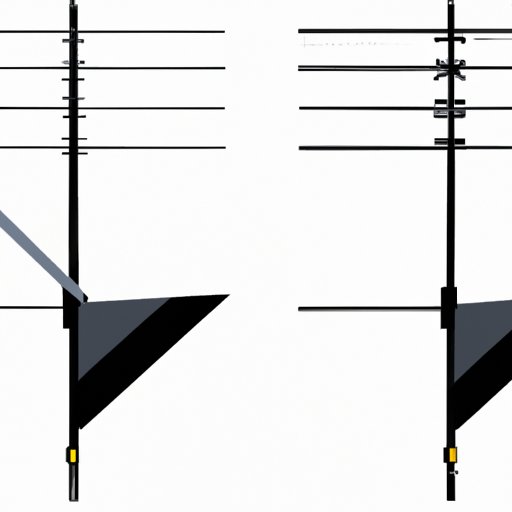
Comparing Indoor vs Outdoor TV Antennas
Indoor antennas are typically smaller and easier to install than outdoor antennas. However, they tend to have a shorter range and are not able to receive as many channels as outdoor antennas. Outdoor antennas are larger and more powerful, but require more effort to install. When choosing between indoor and outdoor antennas, it is important to consider factors such as signal strength, range, size and cost.
Exploring the Benefits of Using a TV Antenna
Using a TV antenna has several advantages. The most obvious benefit is the cost savings. You don’t have to pay for cable or satellite services, which can save you hundreds of dollars per year. Additionally, you have access to more channels than you would with cable or satellite services. TV antennas also provide improved picture quality and can be eco-friendly since they do not require electricity to operate.
In conclusion, TV antennas are a great way to access free over-the-air TV channels without having to pay for cable or satellite services. They are relatively easy to install and come in a variety of types to suit different needs. Understanding how a TV antenna works and its components can help you get the most out of your antenna. Additionally, exploring the benefits of using a TV antenna can help you decide if it is the right option for you.
(Note: Is this article not meeting your expectations? Do you have knowledge or insights to share? Unlock new opportunities and expand your reach by joining our authors team. Click Registration to join us and share your expertise with our readers.)
